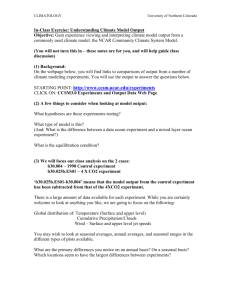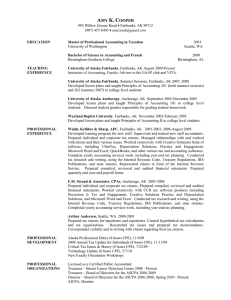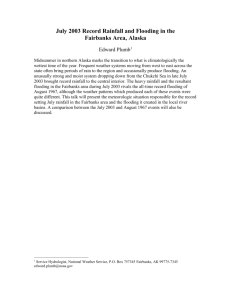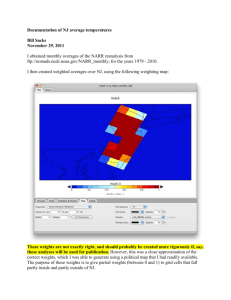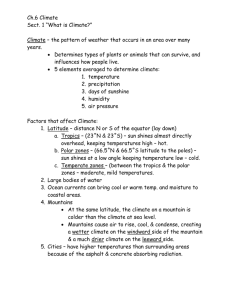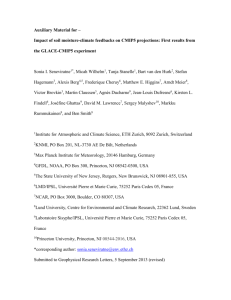Chap 1 climate vs weather
advertisement
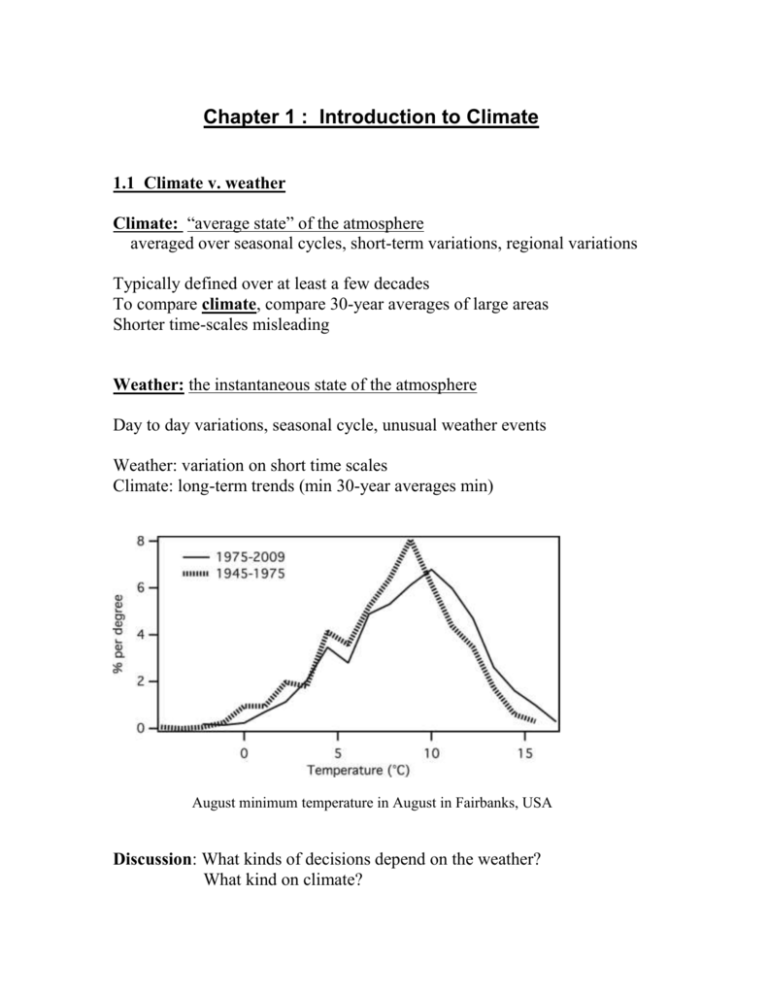
Chapter 1 : Introduction to Climate 1.1 Climate v. weather Climate: “average state” of the atmosphere averaged over seasonal cycles, short-term variations, regional variations Typically defined over at least a few decades To compare climate, compare 30-year averages of large areas Shorter time-scales misleading Weather: the instantaneous state of the atmosphere Day to day variations, seasonal cycle, unusual weather events Weather: variation on short time scales Climate: long-term trends (min 30-year averages min) August minimum temperature in August in Fairbanks, USA Discussion: What kinds of decisions depend on the weather? What kind on climate? 1.2 Climate variables Temperature Average land and sea surface temperature Sea temperature (bulk) Heat waves — droughts Cold seasons – crops destroyed Precipitation Total rainfall and distribution throughout the year. Rainfall in Mumbai vs Houston Houston gets less rain, but much greener because rain is distributed evenly throughout the year. Snowfall Large seasonal variation Large regional variation Climate vs weather: averages vs events Weather is relatively easy to measure Climate is difficult to measure; average of measurements over decades 1.3 Climate change Climate change: variation in long-term statistics of climate elements - over several decades or longer Compare climate for one period against another Is the climate of 1990-2010 different from 1900 -1920? Will the climate of 2100 be different to that of today? Measuring climate change A. Air temperature Surface thermometer record (air temp above land, oceans) Satellite thermometer record (bottom 8 km of atmos) Fairbanks example; minimum August temp (1945-1975): 7.6 °C minimum August temp (1975-2009): 8.5 °C Note: °C= 5/9(F-32) August minimum temperature in August in Fairbanks, USA B. Ocean temperature (bulk) Measured to depth of 4 km using buoys C. Other variables: ice melt (land), ice melt (sea), sea level change, precipitation patterns Do trends in different variables agree? Coordinate system for the Earth Latitude: distance in NS direction from the equator Tropics, mid-latitudes, polar regions Tropics cover half the surface area of the Earth Longitude: angle E or W from the the prime meridian Example: Where is 30.6 °N, 96.3 °W? 1.4 Climate science and society Why should you believe what you'll see in this class? Because it’s what the experts believe (few exceptions ) What is an expert? Relevant and recent experience Active climate scientist - research Agreement among experts (second opinion) How do we know what do the experts believe? Reports written by experts, reviewed by experts Intergovernmental Panel on Climate Change U.S. National Academy of Sciences Other National Academies Statements by expert professional organizations (IoP) Why is there so much debate? Media debate Influential- shared values and beliefs (community) Opposition from industry (non-expert, vested interest) Opposition from conservative politics (non-expert, vested interest) Skeptical statements about climate The climate is not changing (rare) Climate has always changed Senator Rick Perry: climate changing since the Earth was formed * warming has stopped * criticism of the warming record Conclusion: important climate science is accurately portrayed in the media

